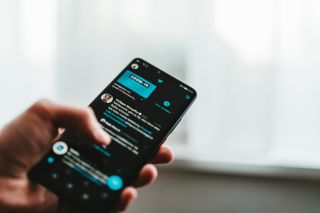Social Networking
8 Ways 'Slacktivism' Can Catalyze Offline Behavior
And three counterforces to watch out for.
Posted November 19, 2023 Reviewed by Jessica Schrader
Key points
- Derision toward slacktivism or clicktivism neglects the intricate web of factors that can stoke behavior.
- Online behavior can bleed into offline behavior by way of modified relationships, thoughts, and identities.
- Some studies do report negative or inert relationships between online and offline behavior.

Writing in The New Yorker more than a decade ago, Malcolm Gladwell proposed that social media is ineffective for driving social movements. In his telling, key social movements such as the Greensboro sit-ins were fueled by the strong ties between its initiators. He argued the same force spurred on anti-Communists in East Germany, pro-Communists in Italy, and anti-Soviet groups in Afghanistan. According to Gladwell, social media is useful at nurturing networks, but ineffective at creating real social change, in part because it creates weak ties (as opposed to strong ones). In Gladwell’s telling, “a networked, weak-tie world is good at things like helping Wall Streeters get phones back from teen-age girls” but relatively useless at catalyzing something akin to the Greensboro sit-ins.
As sturdy as Gladwell’s arguments were, a mere 81 days after his article was published, a young street vendor in Northeastern Tunisia would start a chain of events that supports the idea that social media can significantly impact on social change. Mohamed Bouazizi’s self-immolation first ignited North Africa, and then the wider Middle East, with a seismic movement that became known as the Arab Spring. The role that social media played within this movement has been widely acknowledged, particularly in the case of Egypt.
Debate has since continued amongst psychologists about the effectiveness of social media engagement upon offline/real-world behavior. It is worth keeping in mind that at the early stages of the tech revolution, all online behavior was seen as trivial, frivolous, and tertiary. The increasing enmeshment between offline and online worlds, and the increasing reliance on tech, has forced that attitude into a deep retreat, though there remains something of a distinction between the two (for now).

Online activism has been dismissively described as “slacktivism” or “clicktivism.” Here are eight routes by which this dismissiveness toward online activism in relation to offline behavior is challenged:
1. Continuum of Participation. In Dennis’s (2019) book on “slacktivism,” he builds on the work of Carpentier (2011) and proposes a “continuum of participation.” This describes a pathway that begins with online engagement and concludes with offline action. Dennis begins with access, which describes cognitive engagement with an issue, then expression which centers on communication with others, proceeding then to connection which sees networks formed and developed, and ends with action, typically offline behavior.
2. Instigator-to-Avoider Spectrum. Dennis (2019) also categorizes social media users based on their engagement with social and political issues. Civic instigators are those who attempt to drive social change by sharing information and their opinions. Contributors share content but often without personal opinion, while listeners are those who post on non-political issues, and can keep an eye on social and political content for consumption only. Avoiders are those who actively avoid anything that is sociopolitical in nature. This delineation reflects different types of social media engagement with vastly different behavioral potentials.
3. Challenging Preference Falsification. “Preference falsification” is a psychological phenomenon whereby people openly express a false preference because there is a perceived cost with not doing so. It is sustained by the idea that their real preference is unpopular. Coined by academic Timur Kuran, and more recently deployed by Cass Sunstein, it helps explain why civic instigators can be effective in driving offline social change. It is exhibited amongst citizens of countries of unpopular dictatorships with punitive security apparatuses, where citizens publicly claim to adore the leader. Once people begin broadcasting their real preferences, others quickly follow suit, and change can unfurl rapidly. This was evidenced during the Arab Spring; social media can be a powerful way of enacting this. Gladwell himself quotes a political theorist who described behavior around the sit-ins of the 1960s as spreading “like a fever.” This aligns with other psychological phenomena such as emotional contagion.
4. Norm Breakers and Norm Entrepreneurs. These related terms, also from the work of Sunstein, describe individuals within a society who openly challenge norms, attitudes, and conventional behaviors, with the goal to influencing others in mind. Leading the pack, these figures can be potent instigators for social change, especially in the highly disseminative world of social media. Such actions would directly address those facing a “spiral of silence” and “preference falsifiers.” Influencers can be particularly potent as norm breakers and entrepreneurs, given the persuasive power of “the messenger effect.”
5. The Messenger Effect. A core term from the world of behavioral economics/behavioral science, this ascribes value to who is communicating something to us as opposed to only what they are communicating. Traditional approaches to behavior and influence would hold that the "who" is not as important as the "what" or "why"; this is now challenged. Underlying this change in focus is the dual systems theory of cognition. Being perceived as an authority is one route to bolstering the messenger effect. Authority in the age of social media can be garnered in digestible ways such as high popularity and engagement.
6. Empirical Expectations (vs. Normative Expectations). This term describes what an individual in a community thinks those around them are doing; essentially, how others are behaving. For example, how many people in my community are sharing Netflix passwords? The research of Cristina Bicchieri has shown that this is more influential on behavior than normative expectations, i.e., what others think should be done in relation to the issue. So if you think others are sharing passwords, while you also know that they don’t think this is right, or the normative position is that it is illegal, you are more likely to share passwords regardless. Expressing thoughts, behavioral intentions, or actual behaviors online can thus shift the empirical expectations of others in your community, making them more likely to behave in that way too. This force also gives weight to the (usually problematic) value of social media bots that amplify and distort.
7. The Foot-in-the-Door Technique. In their review of research on the relationship between online activism and social movements, Greijdanus et al. (2020) note that engaging in small, low-cost, online behaviors can ease people into more costly offline behavior. Relatedly, offline behavior can spill over into online behavior, with one's personae becoming more unified into a singular persona. There are also movements in terms of one’s identity, on a intrapersonal and interpersonal level, as individuals become more associated with certain group norms and behaviors.
8. Behavioral Spillovers: Promoting. Another term from the world of behavioral economics, this describes the process wherein investing in a behavior in one area leads to an increase in behaviors related to that area. For example, if I start waking up early and going for an early-morning run for health reasons, I am also more likely to start eating healthier. Similarly, engaging in online behavior about a cause could in theory lead to an offline behavioral spillover pertaining to the same cause.
There are other phenomena and processes that those interested in seeing online behavior catalyzing offline behavior should be wary of. Here are three:
- Behavioral Spillovers: Moral Licensing. The nemesis of promoting, this term (also referred to as self-licensing or permitting) describes the process whereby an individual engages in a behavior but then feels this has earned them a degree of credit to engage in the opposite or conflicting behavior. It is often applied to the area of health, wherein an increase in physical activity leads to an increase in food indulgence, but can apply to other behavioral spheres, too. There appears to be the potential for slacktivists to feel that their online liking, sharing, and discussions warrant that they actually carry out no offline behavior, though some have challenged the strength of such trade-off forces.
- The Trade-Off Hypothesis. Greijdanus et al. (2020) report that while once assumed true, the idea that online activism replaces offline activism does not enjoy strong empirical support (an apparent trade-off): “This appears to be rare. The relationship appears more complex that the trade-off hypothesis suggests.” This dispels the main pillar of those that argue online activism necessitates slacktivism, and is perhaps also indicative of the growing enmeshment between online and offline worlds, and diminishes the apparent strength of moral licensing.
- Digital Divide and Digital Dualism. Rather than a negative relationship between online and offline activism, Greijdanus et al. (2020) found evidence for occurrences wherein there was simply no relationship between online and offline behavior. They describe incidences wherein people engaging in online activism, and those engaging in offline activism, are different groups, as digital divides. Another phenomenon that Greijdanus et al. (2020) reported in relation to there apparently being a divorce between online and offline behavior relates to “digital dualism”; this describes individuals who have different personae online and offline. This is particularly prevalent in situations in which speaking openly and honestly can come with a significant cost for the individual. They also describe individual factors such as low self-control, or avoidant and anxious individuals being more susceptible to digital dualism. Relatedly, their review also found evidence for self-censorship in online behaviors, the strength of which was akin to that of offline behavior.




